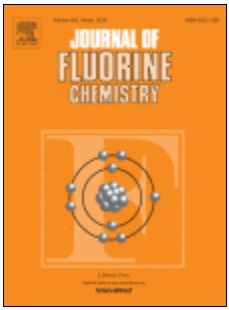There is a need to develop nanosized and submicron sized stable and efficient fluorescent particles for confocal microscopy and fluorescence correlation spectroscopy, which are useful methods to study dynamics and interactions in complex colloidal systems and living cells. Fluorescent core–transparent shell fluorinated polymer nanoparticles exhibit low refractive index, close to that of water, high fluorescence efficiency, high stability and no cytotoxicity which makes them excellent probes for water based and living systems. Fluorescent core–transparent shell submicron particles were synthesized using 1H,1H-heptafluoro-n-butyl methacrylate (HFBMA) as a monomer and Rhodamine-B-isothiocyanate as a dye. The fluorescent polymeric core was surrounded by a non-fluorescent shell obtained by the seeded growth synthesis. The spherical shape of the particles was confirmed by scanning electron microscopy and the particle size in suspension was characterized by dynamic light scattering (DLS) and fluorescence correlation spectroscopy (FCS). The effect of different reaction parameters, such as initiator concentration and polymerization time on the particle size and charge density as well as their toxicity were studied. The smallest nanoparticles, of diameter d = 240 nm for the core measured by DLS, were obtained with higher initiator concentration. Repeated confocal imaging, DLS and FCS measurements after a few months up to two years confirmed high fluorescence efficiency, stability and usefulness of prepared particles as versatile systems for confocal microscopy and fluorescence correlation spectroscopy studies in water-based colloidal suspensions. The cytotoxicity tests confirmed a possible use of these nanoparticles also in living cells

